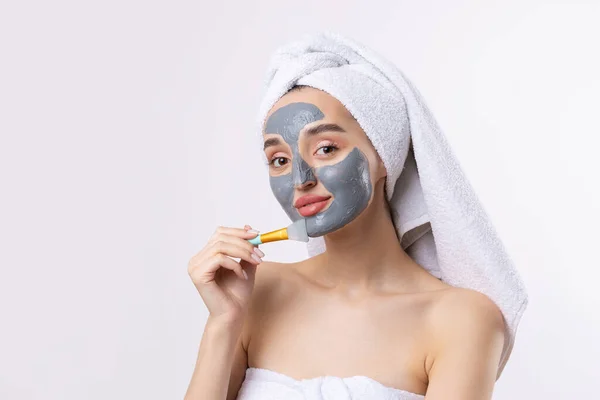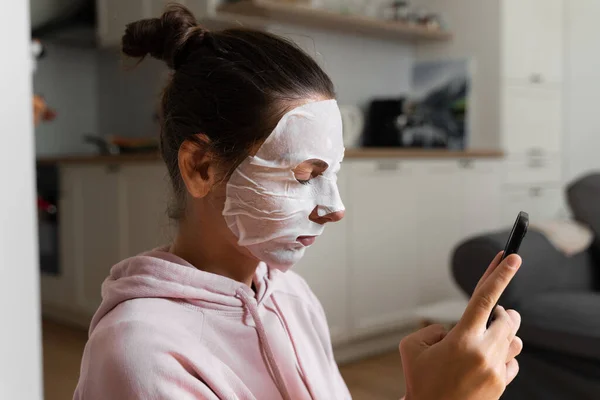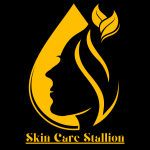What order should I do my skincare routine in to achieve maximum effectiveness?
When it comes to achieving that coveted radiant complexion, the sequence of your skincare routine can make all the difference. Imagine your skincare regimen as a symphony, where each product plays its part in harmony to create a flawless masterpiece.
But without the right order, even the most luxurious serums and creams can fall flat. So, what’s the secret to unlocking your skin’s true potential?
Join us as we delve into the art and science of skincare layering, revealing the perfect order to maximize the benefits of every step and transform your daily routine into a rejuvenating ritual.

What Order Should I Do My Skincare
To achieve healthy, glowing skin, follow this order for your skincare routine: cleanse, tone, treat, moisturize, and protect. Start with a gentle cleanser to remove impurities, use a toner to balance pH, apply treatments like serums for specific concerns, moisturize to hydrate, and finish with sunscreen for protection.
Cleansing
Cleansing is the first and most essential step in any skincare routine. It removes dirt, oil, and makeup, preventing clogged pores and breakouts.
Use a gentle cleanser suited to your skin type, such as a foaming cleanser for oily skin or a cream cleanser for dry skin. Cleansing prepares your skin to absorb the benefits of the subsequent products.
Toning
Toning follows cleansing and is crucial for restoring your skin’s natural pH balance. Toners can also help to remove any residual dirt and oil missed during cleansing.
Look for alcohol-free formulas with hydrating ingredients like hyaluronic acid or soothing elements like witch hazel. Toning ensures that your skin is ready to fully benefit from serums and treatments.
Treatment
This step involves applying serums and treatments that target specific skin concerns. Serums are concentrated formulas designed to deliver active ingredients like vitamin C, retinol, or peptides deep into the skin.
Choose treatments based on your skin’s needs, such as anti-aging, brightening, or acne-fighting. Apply these products after toning to maximize their effectiveness.
Moisturizing
Moisturizing is essential to lock in hydration and create a barrier to protect the skin. Even if you have oily skin, using a suitable moisturizer helps to keep your skin balanced and prevents it from overproducing oil.
For dry skin, opt for richer creams, and for oily skin, choose lightweight, oil-free lotions. Consistent moisturizing helps maintain smooth, supple skin.
Sun Protection
The final step in your morning skincare routine should always be sunscreen. UV protection is crucial to prevent premature aging, sunburn, and skin cancer.
Use a broad-spectrum sunscreen with an SPF of at least 30, and apply it generously to all exposed areas. Reapply throughout the day, especially if you’re outdoors. This step is vital to preserve the health and appearance of your skin.
Understanding Your Skin Type
Identifying Your Skin Type
Knowing your skin type is crucial for effective skincare. There are five primary skin types: oily, dry, combination, sensitive, and normal. Identifying your skin type helps in choosing the right products and creating a skincare routine that caters to your specific needs.
Oily Skin
Oily skin is characterized by excess sebum production, leading to a shiny appearance and enlarged pores. Common issues include acne, blackheads, and a greasy texture. People with oily skin often describe their skin as shiny, greasy, and prone to breakouts.
Dry Skin
Dry skin lacks moisture and natural oils, resulting in a rough, flaky texture. It often feels tight and can appear dull. This skin type is prone to irritation and redness. Descriptors for dry skin include flaky, rough, and itchy.
Combination Skin
Combination skin features both oily and dry areas, typically with an oily T-zone (forehead, nose, and chin) and dry cheeks. It requires a balanced skincare approach. This type is often described as patchy, with some areas being shiny while others are dry.
Sensitive Skin
Sensitive skin is easily irritated and reactive to products and environmental factors. It can exhibit redness, itching, and burning sensations. Individuals with this skin type often mention it being delicate, reactive, and prone to redness.
Normal Skin
Normal skin is well-balanced, not too oily or dry, with a smooth texture and few imperfections. It is the least problematic and easiest to care for. People often describe normal skin as balanced, clear, and healthy-looking.
Tailoring Your Routine to Your Skin Type
Customizing your skincare routine to your skin type ensures optimal results and addresses specific concerns.
For Oily Skin
Use oil-free and non-comedogenic products. Incorporate a gentle cleanser, a lightweight moisturizer, and salicylic acid to control excess oil and prevent acne. Keywords: oil control, acne prevention, non-comedogenic.
For Dry Skin
Focus on hydration and nourishment. Use a creamy cleanser, rich moisturizer, and hyaluronic acid serums to lock in moisture. Keywords: hydration, nourishment, hyaluronic acid.
For Combination Skin
Balance your routine with products that target both dry and oily areas. Use a gel-based cleanser, lightweight moisturizer, and apply treatment products specifically to the oily T-zone. Keywords: balance, T-zone, multi-purpose.
For Sensitive Skin
Choose hypoallergenic and fragrance-free products. Use a gentle cleanser, soothing moisturizer, and avoid harsh ingredients like alcohol or fragrances. Keywords: hypoallergenic, soothing, fragrance-free.
For Normal Skin
Maintain your skin’s balance with a simple routine. Use a gentle cleanser, regular moisturizer, and sunscreen. Keywords: balanced, simple routine, maintenance.

Morning Skincare Routine
Cleansing
Starting your day with a clean face is crucial. It removes impurities and excess oils that accumulate overnight. Cleansers come in various forms, including gel, foam, and cream. Each type suits different skin types.
Gel cleansers are ideal for oily skin, while cream cleansers work well for dry skin. Foam cleansers are versatile and can be used for combination skin.
Toning
Using a toner balances your skin’s pH and preps it for further treatments. Hydrating toners add moisture, while exfoliating toners help remove dead skin cells. Incorporate a toner that suits your skin needs to maximize benefits.
Antioxidant Serum
Antioxidant serums are vital for protecting your skin from environmental damage. They help in reducing the appearance of wrinkles and improving skin texture. Look for serums with Vitamin C, E, and ferulic acid. These ingredients boost skin health and provide a radiant glow.
Eye Cream
The skin around your eyes is delicate and prone to aging. Eye cream helps reduce puffiness, dark circles, and fine lines. Apply a small amount with your ring finger, gently tapping around the eye area for best results.
Moisturizing
Choosing the right moisturizer is essential for maintaining skin hydration. Moisturizers prevent dryness and help your skin retain moisture. Select a product that matches your skin type, whether it’s oily, dry, or combination. Regular moisturization keeps your skin soft and smooth.
Sunscreen
Daily sun protection is non-negotiable. Sunscreen shields your skin from harmful UV rays, preventing premature aging and skin cancer. There are two main types: chemical and physical.
Chemical sunscreens absorb UV rays, while physical sunscreens block them. Apply generously and reapply every two hours for optimal protection.



